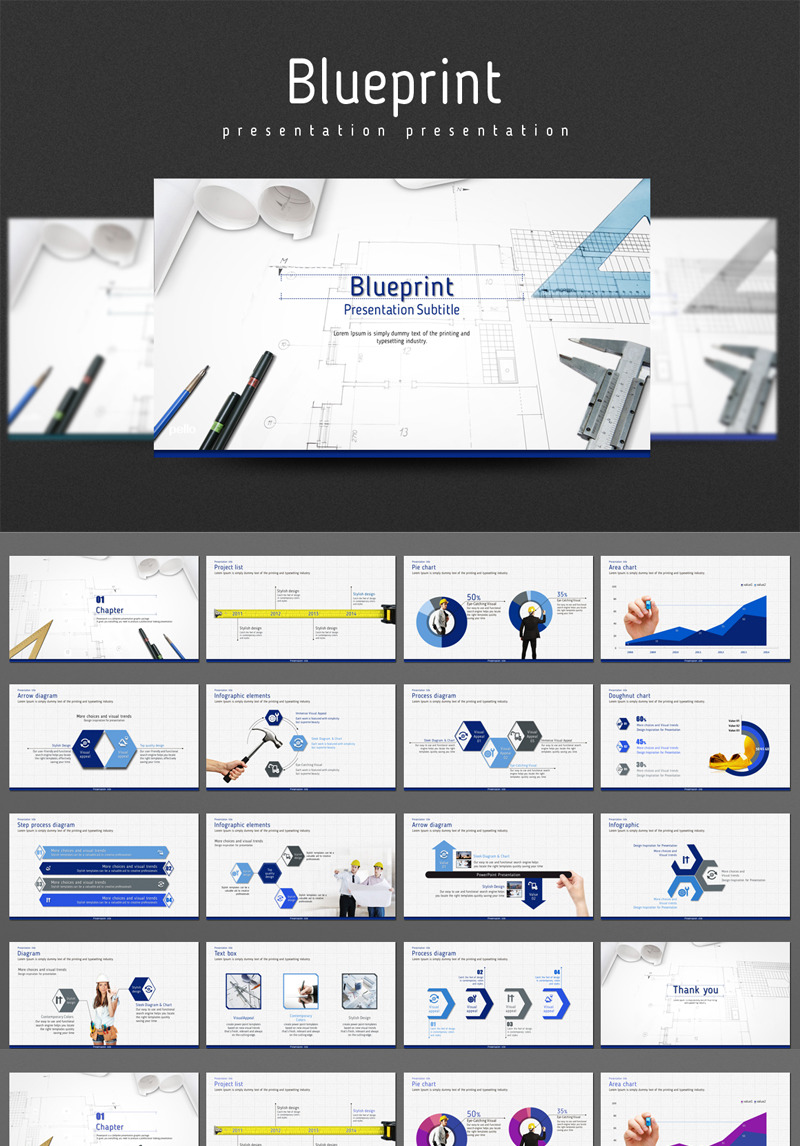
Sometimes qualitative research must be undertaken to gain a qualitative understanding of the problem and its underlying factors. Information, industry experts, and secondary data may not be sufficient to define the research problem. Qualitative Research in the Research Process
Blueprint background for powerpoint how to#
Writing a research report, presenting your findings at a conference, or publishing your study in a journal are all examples of how to do this. Effectively explain your findings: It’s critical to provide your research’s conclusions in a clear, succinct manner.It is crucial to employ the proper statistical methods and interpret the findings cautiously. Analyze the data correctly: If you want to draw reliable findings from your research, your data analysis must be done correctly.Use the right data-gathering techniques, and make sure the data is gathered reliably and consistently. Collect reliable information: because it will have a direct impact on how well your research turns out.Making the proper design choice will help assure your study’s validity and reliability. Select the best research design possible: Various research designs are applicable for various research topics.This will make it easier to direct your research efforts and guarantee that you are gathering pertinent facts. Define the research challenge and goals in detail: It’s crucial to grasp exactly what you’re attempting to learn and what you want to achieve.In addition, an oral presentation should be made to management using tables, figures, and graphs to enhance clarity and impact. The findings should be presented in a comprehensible format so that they can be readily used in the decision-making process.

The final step is to report the research findings to those who need the data to make decisions. You will most likely revise the draft many times before the final product is ready for Step 5.
 Step D: Polish the rough draft into your final research finding. The rough draft will help you get your thoughts organized. Step C: Create a rough draft of your finding, recommendations, and conclusion. Step B: Organize your finding and the information you have collected from Step 3. Make sure the conclusion is easy to understand and well thought out based on the data collected. This step is focused on interpreting and examining the research data and coming up with a conclusion that solves the problem. Library Sources: Old reports and articles/books Step 4 – Interpreting Research Data. Documents and Records: old fashion research. Focus Groups: Interviewing and observing a group of people. Questionnaires: Ask questions among a group of people. Observations: collecting data without asking questions. Interviews: Asking people questions about their known information. Data collection can involve experiments, observations, personal interviewing (in-home, mall intercept, or computer-assisted personal interviewing), from an office by telephone (telephone or computer-assisted telephone interviewing), or through the mail (traditional mail and mail panel surveys with recruited households). The two groups of researchers must provide data. This step revolved around obtaining the information needed to solve the identified issue or problem. Step 8: Plan of data analysis Step 3 – Collecting Data. Step 7: Sampling process and sample size. Step 5: Determine measurement and scaling procedures.
Step D: Polish the rough draft into your final research finding. The rough draft will help you get your thoughts organized. Step C: Create a rough draft of your finding, recommendations, and conclusion. Step B: Organize your finding and the information you have collected from Step 3. Make sure the conclusion is easy to understand and well thought out based on the data collected. This step is focused on interpreting and examining the research data and coming up with a conclusion that solves the problem. Library Sources: Old reports and articles/books Step 4 – Interpreting Research Data. Documents and Records: old fashion research. Focus Groups: Interviewing and observing a group of people. Questionnaires: Ask questions among a group of people. Observations: collecting data without asking questions. Interviews: Asking people questions about their known information. Data collection can involve experiments, observations, personal interviewing (in-home, mall intercept, or computer-assisted personal interviewing), from an office by telephone (telephone or computer-assisted telephone interviewing), or through the mail (traditional mail and mail panel surveys with recruited households). The two groups of researchers must provide data. This step revolved around obtaining the information needed to solve the identified issue or problem. Step 8: Plan of data analysis Step 3 – Collecting Data. Step 7: Sampling process and sample size. Step 5: Determine measurement and scaling procedures.  Step 4: Determine the definition of the information needed. Step 3: Determine methods of collecting quantitative data (survey, observation, and experimentation). Step 1: Conduct secondary data analysis. The research design involves the following steps: It details the procedures necessary for obtaining the required information, and its purpose is to design a study that will test the hypotheses of interest, determine possible answers to the research questions, and provide the information needed for decision-making. A research plan or approach is a framework or blueprint for conducting a research project. This step is focused on creating a research plan or overall approach to how you are going to solve the issue or problem identified. Advertisements Step 2 – Designing the Research Project
Step 4: Determine the definition of the information needed. Step 3: Determine methods of collecting quantitative data (survey, observation, and experimentation). Step 1: Conduct secondary data analysis. The research design involves the following steps: It details the procedures necessary for obtaining the required information, and its purpose is to design a study that will test the hypotheses of interest, determine possible answers to the research questions, and provide the information needed for decision-making. A research plan or approach is a framework or blueprint for conducting a research project. This step is focused on creating a research plan or overall approach to how you are going to solve the issue or problem identified. Advertisements Step 2 – Designing the Research Project







 0 kommentar(er)
0 kommentar(er)
